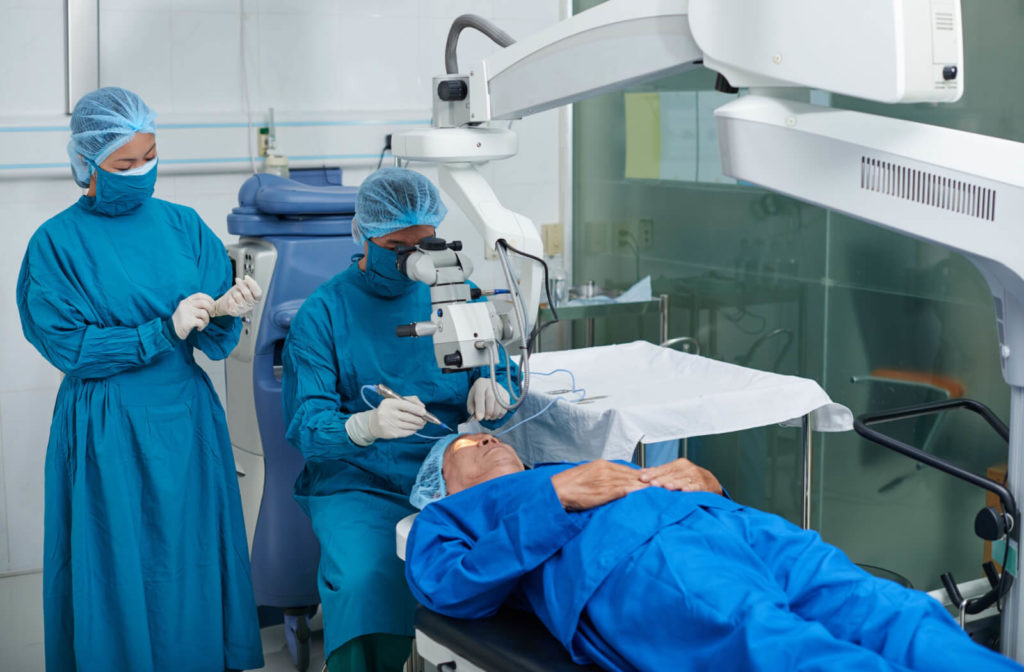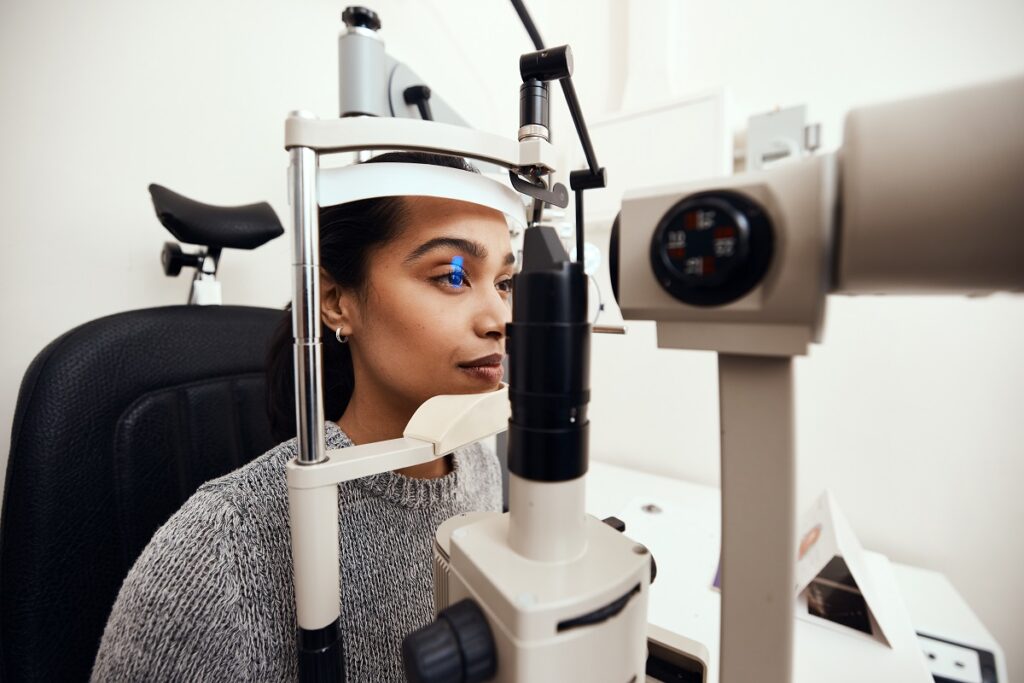Discovering the current Technical Developments in Optometry and What They Mean for Eye Doctors
In the ever-evolving area of optometry, recent technological improvements are improving just how specialists come close to eye care. From the accuracy of Optical Comprehensibility Tomography to the nuanced understandings provided by AI-driven diagnostic tools, these technologies are setting new requirements in person analysis and treatment. Teleoptometry is positioned to redefine accessibility, guaranteeing that experience transcends geographical limitations. As these innovations penetrate the practice, eye doctors are confronted with the challenge of accepting these devices to boost client outcomes. The concern stays: how will these technical shifts redefine the functions and obligations within the career?
Technologies in Diagnostic Equipment
Progressing the field of optometry, innovations in diagnostic devices have transformed the way eye treatment specialists examine and identify ocular conditions and visual impairments. The previous decade has observed substantial technical innovations, making it possible for even more extensive and accurate assessments.
One more secret development is the intro of innovative corneal topography systems, which map the surface area curvature of the cornea with precision. These devices are specifically valuable for suitable contact lenses and identifying corneal conditions. Digital retinal imaging has transformed traditional ophthalmoscopy, providing thorough, scenic views of the retina that help with thorough visual examinations.
The advancement of wavefront aberrometry has additionally been crucial, allowing the analysis of refractive mistakes with unequaled accuracy (Optometrist Chino). This innovation helps in tailoring corrective lenses and enhancing surgical results for refractive surgeries. Jointly, these diagnostic innovations empower eye doctors to supply remarkable client care, guaranteeing early treatment and tailored therapy approaches, ultimately improving aesthetic health end results
AI in Person Administration
Structure on the structure of sophisticated analysis tools, the unification of man-made intelligence (AI) in client administration stands for a transformative jump for optometry. AI systems are increasingly used to improve performance, precision, and personalization in person treatment.
Moreover, AI-driven platforms assist in streamlined patient interactions and management procedures. Automated scheduling, virtual examinations, and individualized follow-up strategies not just improve client fulfillment however also enhance time monitoring for professionals. These systems can triage patients based upon the urgency of their conditions, making sure that those in critical need receive punctual interest.
In addition, AI boosts decision-making by giving optometrists with evidence-based suggestions and treatment pathways. By incorporating information from electronic health documents, AI devices use understandings that educate professional decisions, decreasing the risk of mistakes and enhancing client results. As AI remains to advance, its duty in patient management will likely broaden, improving the landscape of optometric care.
Advancements in Retinal Imaging
In the realm of optometry, retinal imaging has actually experienced amazing technical innovations that are improving diagnostic capacities and client treatment. Technologies such as Optical Comprehensibility Tomography (OCT) and fundus digital photography have changed exactly how optometrists visualize and analyze the retina.
Enhanced imaging methods like OCT angiography are additional refining analysis precision. This non-invasive strategy maps blood circulation in the retina, using critical understandings into vascular health and wellness without the Resources requirement for color shots. Additionally, adaptive optics technology is being integrated right into retinal imaging systems to remedy eye aberrations, providing unprecedented photo clarity. Such advancements help with the identification of min retinal changes that click resources can represent illness progression.
Moreover, innovations in fabricated intelligence are enhancing retinal imaging by allowing automatic analysis of big datasets. These systems assist optometrists in identifying patterns indicative of pathology, thereby improving diagnostic precision and effectiveness. Jointly, these technologies are changing retinal imaging into a cornerstone of modern eye treatment, improving outcomes and broadening healing opportunities.
Teleoptometry's Expanding Role
Teleoptometry is progressively coming to be an important element of eye treatment, driven by advancements in electronic communication and diagnostic tools. This is especially useful in country and underserved areas where accessibility to specialized eye treatment is frequently limited.
The assimilation of expert system (AI) additional enhances teleoptometry, making it possible for the evaluation of aesthetic information and assisting in the discovery of ocular conditions such as glaucoma and diabetic person retinopathy. AI-powered algorithms can quickly interpret complex imaging data, providing eye doctors with beneficial insights that bolster medical decision-making.
In addition, teleoptometry sustains continuity of treatment with smooth integration with digital health and wellness documents (EHRs), enabling optometrists to preserve extensive person histories. When consulting with various experts., this guarantees that individuals receive consistent and individualized treatment also.
Regardless of these benefits, difficulties stay, consisting of making sure information protection and managing patient assumptions. Teleoptometry represents a significant stride towards even more accessible, effective, and patient-centered eye care. As technology progresses, its function is poised to expand further.

Future Trends in Eye Care
A myriad of innovative fads is set to improve the future of eye treatment, driven by technological developments and the progressing demands of patients. One considerable fad is the combination of expert system (AI) in diagnostics, which assures to enhance the precision and performance of eye assessments. AI algorithms can analyze substantial quantities of data from retinal photos, possibly finding problems like diabetic retinopathy and glaucoma earlier than standard methods.
Moreover, customized medication is getting grip in optometry, with genetic screening informing tailored therapy strategies. This strategy intends to optimize client results by tailoring treatments to private hereditary accounts. Wearable modern technology, such as wise get in touch with lenses, is also on the perspective, providing real-time surveillance of intraocular pressure or glucose levels, hence supplying continuous understandings into systemic and ocular wellness.
The adoption of increased truth (AR) and online fact (VR) in training and patient education is another emerging pattern. These technologies use immersive experiences that can boost understanding and skills both for people and eye doctors. As these trends evolve, optometrists should remain abreast of technological developments to provide cutting-edge treatment, ensuring better client end results and fulfillment in the dynamic landscape of eye care.
Conclusion

Jointly, these analysis innovations equip eye doctors to deliver premium client care, guaranteeing very early treatment and customized treatment approaches, ultimately boosting visual health results.

As these modern technologies continue to advance, eye doctors must adapt and integrate them right into technique, inevitably optimizing workflow efficiency and raising the criterion of eye treatment supplied to people.